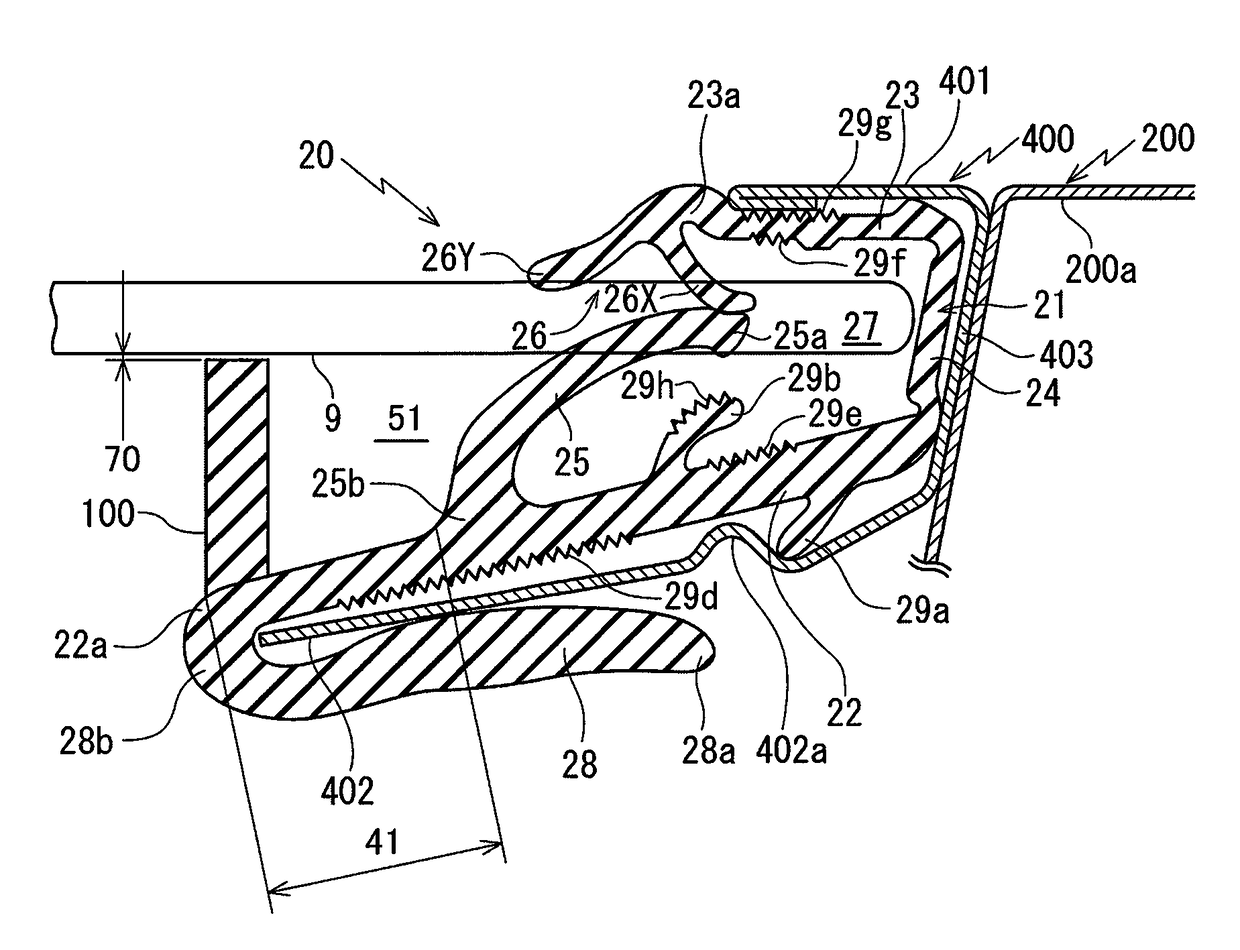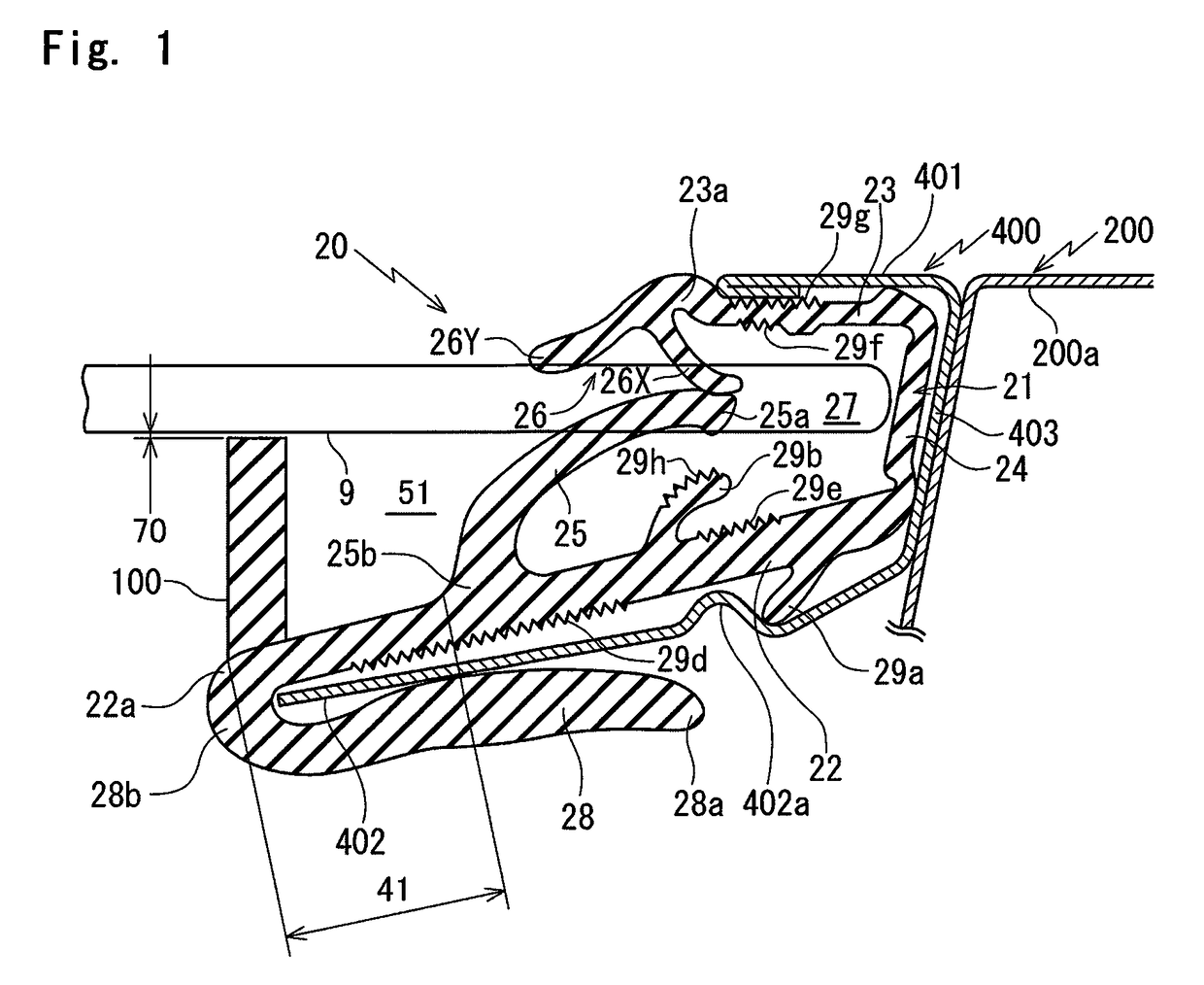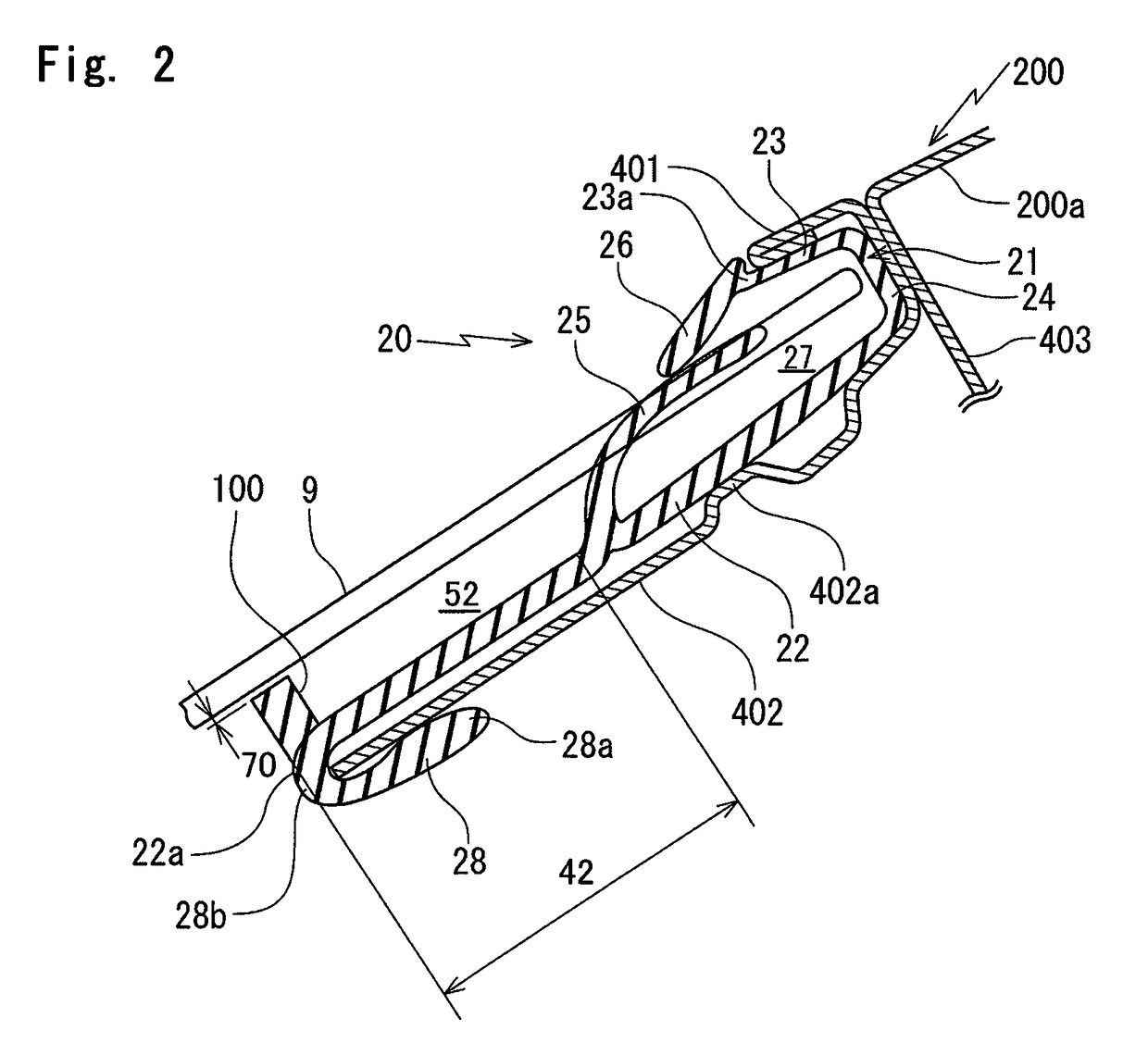Glass run
a glass run and run technology, applied in the field of glass runs, can solve the problems of reducing the concave space, affecting the sound quality of the engine, so as to reduce the sound pressure level of the sound
- Summary
- Abstract
- Description
- Claims
- Application Information
AI Technical Summary
Benefits of technology
Problems solved by technology
Method used
Image
Examples
Embodiment Construction
[0048]Referring to FIG. 1 to FIG. 3, a glass run according to an embodiment of the present invention will be described.
[0049]FIG. 1 shows a state that a glass run 20 according to the embodiment of the present invention is assembled on a door sash (frame) 400. FIG. 1 corresponds to an I-I line enlarged cross section of FIG. 12 and FIG. 2 corresponds to a II-II line enlarged cross section of FIG. 12. When constituents or items correspond to those in prior arts, the same symbols are used.
[0050]The glass run 20 of the present invention is fittable along the door sash (frame) 400 mounted on a door panel 200a of a press door type front door 200 (or a rear door 300 in the same manner) by spot welding. The glass run 20 guides a door glass 9 lifting or lowering into a channel 27.
[0051]The glass run 20 of FIG. 1, as employed in FIG. 12 is applied on a rear side vertical edge part 12 which extends upward from an inner part of the door panel 200a of the front door 200 and is positioned vertical...
PUM
 Login to View More
Login to View More Abstract
Description
Claims
Application Information
 Login to View More
Login to View More - R&D
- Intellectual Property
- Life Sciences
- Materials
- Tech Scout
- Unparalleled Data Quality
- Higher Quality Content
- 60% Fewer Hallucinations
Browse by: Latest US Patents, China's latest patents, Technical Efficacy Thesaurus, Application Domain, Technology Topic, Popular Technical Reports.
© 2025 PatSnap. All rights reserved.Legal|Privacy policy|Modern Slavery Act Transparency Statement|Sitemap|About US| Contact US: help@patsnap.com



